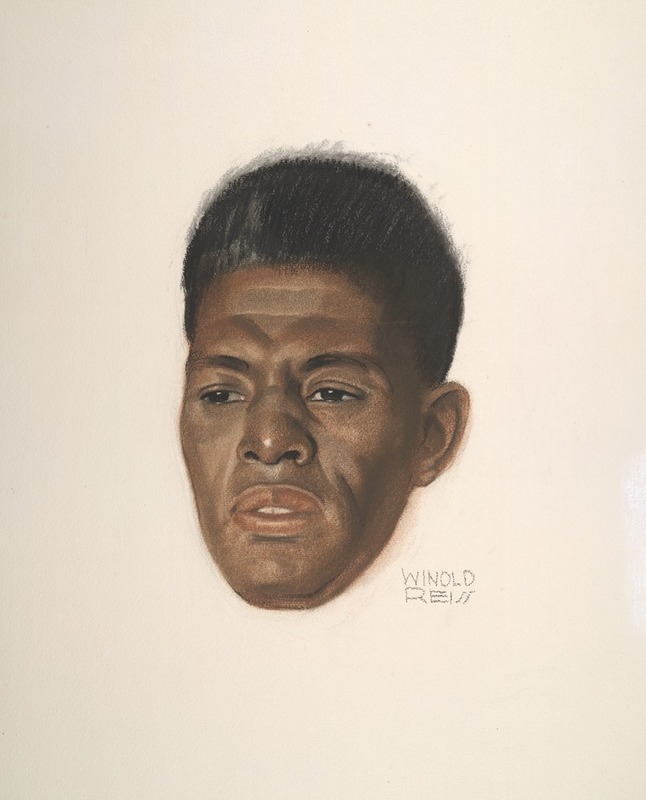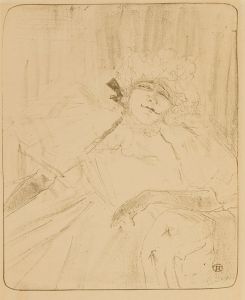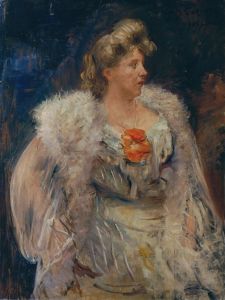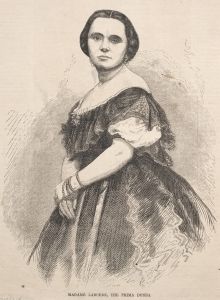
Roland Hayes
A hand-painted replica of Winold Reiss’s masterpiece Roland Hayes, meticulously crafted by professional artists to capture the true essence of the original. Each piece is created with museum-quality canvas and rare mineral pigments, carefully painted by experienced artists with delicate brushstrokes and rich, layered colors to perfectly recreate the texture of the original artwork. Unlike machine-printed reproductions, this hand-painted version brings the painting to life, infused with the artist’s emotions and skill in every stroke. Whether for personal collection or home decoration, it instantly elevates the artistic atmosphere of any space.
Winold Reiss was a German-American artist known for his portraits and his contributions to the Harlem Renaissance. One of his notable works is the portrait of Roland Hayes, an influential African American lyric tenor and composer. This portrait is a significant piece that captures both the essence of the subject and the artistic style of Reiss.
Roland Hayes, born in 1887 in Curryville, Georgia, was one of the first African American classical musicians to achieve international fame. His career was groundbreaking, as he performed in prestigious venues across Europe and the United States during a time when racial discrimination was rampant. Hayes was renowned for his interpretations of classical repertoire, as well as his performances of African American spirituals, which he helped to elevate to the concert stage.
Winold Reiss, born in 1886 in Karlsruhe, Germany, immigrated to the United States in 1913. He was deeply influenced by his father, who was a painter and a teacher. Reiss's artistic philosophy was shaped by his belief in the equality of all people, which was reflected in his diverse range of subjects. He was particularly drawn to portraying people from various cultural backgrounds, including Native Americans and African Americans, which was somewhat unconventional for his time.
The portrait of Roland Hayes by Winold Reiss is a testament to Reiss's skill in capturing the dignity and character of his subjects. Reiss employed a vibrant color palette and a keen attention to detail, which are hallmarks of his style. His use of color and form in the portrait of Hayes not only highlights the physical features of the tenor but also conveys a sense of his inner strength and grace.
Reiss's work was instrumental in documenting and celebrating the cultural contributions of African Americans during the Harlem Renaissance, a cultural movement in the 1920s and 1930s that sought to redefine African American identity and promote racial pride. His portraits were featured in publications such as "The New Negro," an anthology edited by Alain Locke that played a crucial role in the Harlem Renaissance by showcasing African American writers, artists, and intellectuals.
The portrait of Roland Hayes is more than just a representation of an individual; it is a piece of cultural history that reflects the broader social and artistic movements of the time. It stands as a symbol of the collaboration between artists and musicians who were at the forefront of challenging racial barriers and reshaping the cultural landscape of America.
Winold Reiss's portraits, including that of Roland Hayes, continue to be celebrated for their artistic merit and their role in promoting cultural understanding and appreciation. They serve as a reminder of the power of art to transcend social boundaries and to honor the contributions of individuals who have paved the way for future generations.











![Graphic design for Fisk Jubilee Singers.] [Concert poster with harp and mask motif](/imgs/249251/s/winold-reiss-graphic-design-for-fisk-jubilee-singers-concert-poster-with-harp-and-mask-motif-3c54d344.jpg)
![Designs and photographs for alterations to St. James Bar Restaurant, W. 181st St. and Broadway, New York, NY.] [Incomplete study of exterior elevation](/imgs/249307/s/winold-reiss-designs-and-photographs-for-alterations-to-st-james-bar-restaurant-w-181st-st-and-broadway-new-york-ny-incomplete-study-of-exterior-elevation-15d88bd6.jpg)

![Interior design drawings for unidentified rooms.] [Sketch for unidentified room with starred walls](/imgs/249363/s/winold-reiss-interior-design-drawings-for-unidentified-rooms-sketch-for-unidentified-room-with-starred-walls-78931be1.jpg)

![Interior perspective studies for Restaurant Crillon, 15 East 48th Street, New York, NY.] [Interior perspective study](/imgs/249374/s/winold-reiss-interior-perspective-studies-for-restaurant-crillon-15-east-48th-street-new-york-ny-interior-perspective-study-57caabec.jpg)
![Design sketches for Hotel Alamac, 71st and Broadway, New York, NY.] [Sketch for Medieval Grill Murals](/imgs/249415/s/winold-reiss-design-sketches-for-hotel-alamac-71st-and-broadway-new-york-ny-sketch-for-medieval-grill-murals-6dec3039.jpg)
